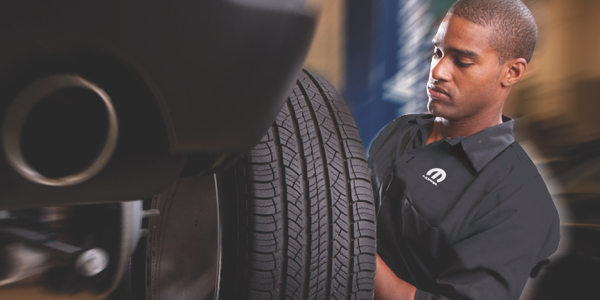Tire Repair Myths Debunked: Dividing Truth From Fiction
In the realm of auto maintenance, tire repair holds a substantial area, yet it is typically shrouded in myths and misunderstandings that can lead to confusion for automobile proprietors (morris tire service). From the misconceptions surrounding patching versus plugging a pierced tire to the performance of numerous tire sealers, there are several essential areas where clearness is needed to make informed choices.
Usual Tire Fixing Misconceptions
Eliminating common misunderstandings surrounding tire fixing is vital for preserving roadway safety and expanding the longevity of your lorry's tires. It is necessary to comprehend that not all slits are produced equal; while some might indeed call for a tire replacement, the bulk can be safely fixed.
Another false impression is the idea that a do it yourself tire repair work set is a sufficient option for all tire issues. While these sets can be convenient for short-term solutions in emergencies, they are not a long-term remedy and may not resolve the underlying problem (morris tire). Looking for the knowledge of a certified tire specialist is constantly recommended to ensure the safety and stability of the tire

Can You Fix a Punctured Tire?
Fixing a punctured tire is a typical technique in the automotive industry, commonly executed by professional specialists complying with details standards and standards. However, not all leaks can be fixed. The area, dimension, and extent of the puncture are essential aspects in figuring out if a tire is repairable. Slits located on the tread area of the tire are generally repairable as long as they are within a certain size limit and do not affect the tire's structural integrity.
It is essential to note that penetrates near the sidewall or shoulder of the tire are generally not repairable as a result of safety and security worries. Such areas undergo significant anxiety and flexing, making repair work undependable and potentially unsafe. Furthermore, if the puncture is also big, surpassing the recommended repairable dimension, or if the tire shows indicators of interior damage, it is much safer to change the tire entirely.
The Fact Concerning Patching Vs. Plugging
When thinking about the repair service of a punctured tire, recognizing the distinctions between patching and plugging is necessary for making educated choices concerning tire upkeep and security. Patching includes fixing the tire from the inside, where a spot is related to cover the leak. This approach is considered even more reliable and resilient as it addresses the damage inside, reducing the risk of air leakage and more tire damage. On the other hand, plugging is a fast solution that involves placing a rubber link into the punctured area from the exterior. While connecting is convenient and can be done without eliminating the tire from the edge, it is generally thought about a short-lived service and might not give the same level of sturdiness as a spot.
Misconception: All Tire Sealants Are Effective

When selecting a tire sealer, consider variables such as find more info the size of punctures it can successfully repair, compatibility with tire pressure surveillance systems (TPMS), and whether it is safe for the tire material. Reviewing evaluations and looking for referrals from specialists can assist you make an informed decision. In addition, regular maintenance and prompt substitute of sealant can aid guarantee optimum performance. Keep in mind, while tire sealers can be beneficial in emergencies, they are not an alternative to correct tire care and maintenance.
Finest Practices for Handling Flat Tires
In light of the varying efficiency of tire sealers, recognizing finest techniques for dealing with blowouts is essential for maintaining road safety and vehicle efficiency. When running into a puncture, the primary step is to safely draw over sideways of the road, far from oncoming traffic. Transform on danger lights to inform various other chauffeurs of your circumstance. It is recommended to apply the hand brake and location wheel wedges under the tires to avoid the lorry from rolling. Next, consult your lorry's manual to locate the extra tire, jack, and lug wrench. Before trying to transform the tire, make sure that the area official source is flat and secure. Loosen look what i found the lug nuts, increase the vehicle with the jack, eliminate the lug nuts and level tire, and replace it with the spare tire. Tighten up the lug nuts in a celebrity pattern, lower the car, and firmly tighten the lug nuts. Lastly, stash the level tire, tools, and devices, and bear in mind to check the spare tire's pressure occasionally. Following these best methods can aid you handle punctures effectively and safely.
Final Thought
To conclude, it is necessary to separate fact from fiction when it concerns tire fixing misconceptions. Recognizing the truth concerning patching vs. plugging, the efficiency of tire sealants, and finest practices for managing blowouts can assist guarantee the security and durability of your tires. By disproving usual misunderstandings and complying with appropriate repair service guidelines, you can make educated decisions when it concerns preserving the health of your car's tires.